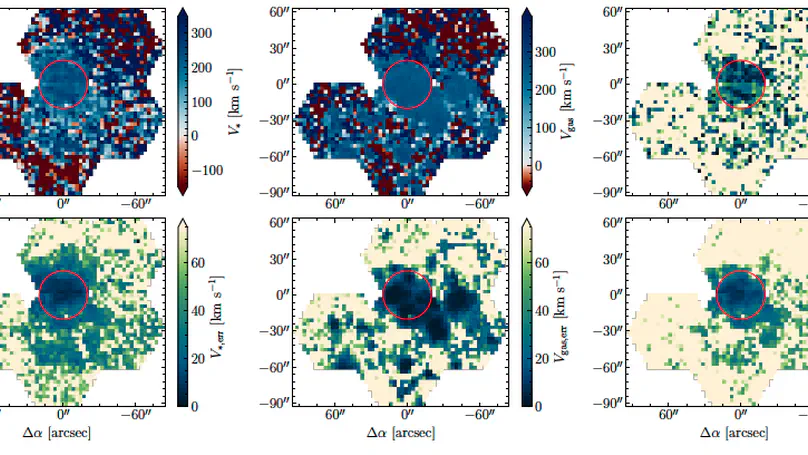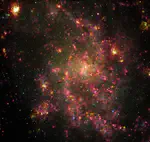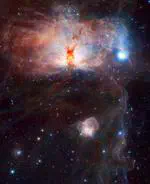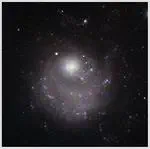Biography
Hello! My name is Ray Garner and I am a postdoc in the Astronomy Group at Texas A&M University in College Station, Texas. I am working with Dr. Rob Kennicutt on the Star formation, Ionized Gas, and Nebular Abundances Legacy Survey (SIGNALS), a survey of HII regions across ~35 galaxies. You can check out the survey paper here.
Before I arrived in College Station, I was a graduate student at Case Western Reserve University in Cleveland, Ohio working with Prof. Chris Mihos on a detailed analysis of the Pinwheel Galaxy (M101) and its small satellite group using the deep, wide-field, narrowband imaging capabilities of the Burrell Schmidt 24/36-inch telescope.
Briefly, my thesis utilizes narrowband images of Hα, Hβ, [OIII]λλ4959,5007, and [OII]λλ3726,3729. These images allowed me to search the entire M101 Group for outlying, intragroup star-forming regions (finding none), measure the oxygen abundance gradient of M101 (suggesting a broken gradient at
Before attending CWRU, I was a student at Furman University in Greenville, South Carolina where I graduated with a B.S. in Physics, Summa Cum Laude. While there, I completed research in general relativity with Dr. Bill Baker (ret.). During the summer of 2017, I attended a Research Experience for Undergraduates (REU) at Indiana University in Bloomington, Indiana. There, I worked on ionized gas kinematics of nearby, low-mass galaxies with the late Dr. Liese van Zee.
- Galaxy evolution
- Star formation
- Nebular diagnostics
- Spiral structure
PhD in Astronomy, 2023
Case Western Reserve University
BS in Physics, 2018
Furman University
Featured Publications

A satellite galaxy of the nearby spiral M101, NGC 5474 has a prominent bulge offset from the kinematic center of the underlying star-forming disk that has gained attention in recent years. Recent studies have proposed that this putative offset bulge is not a classical bulge within the plane of the disk but instead a dwarf companion galaxy along the line-of-sight. Using integral field spectroscopy data taken as part of the PPak IFS Nearby Galaxies Survey (PINGS), we perform the first analysis of the stellar and gas kinematics of this putative bulge and portions of the disk. We find a radial velocity offset of ~24 km/s between the emission lines produced by the disk HII regions and the absorption lines produced by the putative bulge stellar component. We interpret this velocity offset as evidence that the putative bulge and disk are two separate objects, the former orbiting around the latter, supporting simulations and obserations of this peculiar system. We attempt to place this external companion into the context of the M101 Group and the M101-NGC 5474 interaction.
Recent Publications
Recent & Upcoming Talks
Contact
- ray.garner at tamu.edu
- 4242 TAMU, College Station, TX 77843





